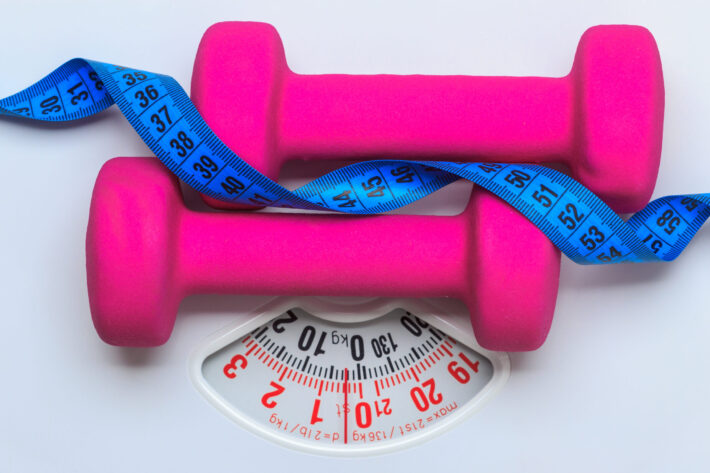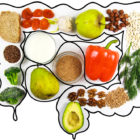
Have you ever dreamed of competing in a bikini as a body builder? After watching Kimberly Doehnert’s results with new students, it’s definitely possible. Menopause doesn’t have to tip the scales! Find out how body builder and IFBB Figure Pro champion Kimberly Doehnert is helping women around the country combat the menopause muffin top.
Dr. Mache Seibel: Hello and welcome! After surveying over 10,000 women about their concerns during menopause, the overwhelming response was, “how to control my weight during menopause.”
To try and answer that question in a way that would be really helpful and meaningful to you, I have asked Kimberly Doehnert, CEO of Fitness 4 Life Consulting Inc, to share her secrets on controlling weight during menopause. So, Kimberly, I want to say I’ve had the pleasure to get to know you. You are an incredible teacher and trainer in this area. Thank you for spending some time with us today!
Kimberly Doehnert: Thank you for having me.
MS: So, tell me a little bit about fitness and how you are coaching women. You have your own programs and you have your gym that you teach in, but what’s the goal? What are you trying to do when women come to you? What is the outcome that you’re looking for?
KD: My clients are typically 40 to 60 year-old women who want to get sexy back, and there are obvious factors in their lives that are causing them to feel like they’re not as hot as they were when they were in their 20s and 30s –
MS: They’ve got hot flashes but they don’t feel “hot.”
KD: Yes! I’m a Figure Pro and work with women who want to get in better shape and who competitively want to compete for figure and bikini. I also work with women every day; women who just want to get in topnotch shape.
MS: We can talk about why some women gain weight during menopause in a moment. But the thing about it is that here you are talking to 40 to 60 years old women about getting in shape and even considering a bikini competition, which is showing your body in a bikini.
KS: On stage.
MS: On stage and get a trophy for it! Most women are struggling to fit into the same size dress they wore last year, let alone stepping on stage in a bikini! A lot of women that worked with you have done that, but the fact of the matter is, there are steps that women can be taking to get in shape; and there are things that can make them feel better, look better, and live better.
So, maybe you could talk a little bit about some of the basics. What’s a couple of things that everyone could do to start getting fit and fabulous in this window of time?
KD: This journey evolved for me. I am 48 and being perimenopausal, I have gone through the transitions that all your clients, the women who reach out to you about menopause, are dealing with. The same techniques and tips that I used with women when I was in my 30s and 40s translate to women in menopause-consistency. I’ll share some of the basics that I give someone who wants to compete, as well as someone who doesn’t want to compete but just wants to get back into shape. This is one tip that I just want to start out with: Every woman should have a push point weight where they say, “No more! That’s it!” What is that number? For me, it’s 150; if I get past 150 pounds, things in my life go chaotic. I start feeling bad about myself, how I feel with my husband; things change.
MS: That is a very important point because what ends up happening for a lot of people is that they inch past the point of return and feel like there is no coming back.
KD: If you’re a woman in your 40s and you say, “When I was 150, things were awesome in my life”, then that’s your push point. Be realistic though. Don’t talk about when you were 125 pounds in your 20s. Let’s go back in your life when you really felt good about yourself!
MS: What’s good for the present day you.
KD: The first step is getting an assessment. Get out a tape measure. Get out the scale, pull it out of the closet, get the dust off of it, right? What is your waist measuring? Your thighs? Then get a sheet of paper: Here I am today, I weigh x. This is what my measurements are, and here’s where I want to be and why. And these are all the things I want to improve. For example, I want to lose an inch off my waist. I want to lose 2 inches off my hips and so on.
MS: Because a lot of people measure different locations. Can you tell us exactly where to measure your waist?
KD: What Dr. Oz said is that, “Your waist is your navel.” So take that measuring tape right across the middle of your navel. That’s your waist. That’s called the payday; if that part of the belly goes down, life is good. But if you’ve got a muffin top, life is not as nice, right?
MS: Where do you measure your thighs?
KD: Find your hip bone and measure about 10 inches down from the hip bone. That’s usually where there’s going to be some thickness; it’s a really good spot. But if a woman’s got a spot on her body she hates, measure it.
The second step is, “Get my mind right.” What is realistic? What do I need to do to make this happen? What has to change? That means you have to start thinking about your environment. What’s going on around you that has to change? If you’re not getting enough sleep, if you’re hanging out working late too much, if you’re watching too much TV, if you’re on the net too much. What do I need to change about my life to make this happen for me to put the time into this? Be realistic.
MS: So look at your habits that could be in conflict with the outcome that you want.
KD: Make a list. What’s in your way? “Well, I don’t have time to work out.” Why don’t you have time to work out? Before you start jumping into some big program, we’ll talk about some steps for that, but let’s just make sure that we’ve cleaned up some of the muck.
Now for step 3-start a realistic program. When are you going to work out? Is it better for you to get up earlier in the morning to work out? You want to make sure you structure your workouts, so put them on the calendar and devise a very basic plan. Step three includes varying your program. What does that look like to you?
Our basic plan is to hit every body part a couple times a week-the chest, legs, back, and arms. The smaller body parts, you hit once a week. The major areas, which usually include most of the weight, are the legs, back, and chest. Hit those 3 to 5 days a week if you can get it in.
MS: So you want to create the space in your calendar and then you want to create the space in your environment?
KD: Right. You figure out what’s the best way for you, so you don’t set yourself up for failure. You like classes, well then maybe you should join the kickboxing gym in your neighborhood or the Zumba place. Don’t do what someone else is doing. Do what you want to do.
MS: So you want to try and put a timeframe that counts. How long is that?
KD: I’d say 90 days. When my clients come work with me, I always tell them, “You’ve got 90 days to get out of here.” “What do you mean I’ve got to get out?” Because I don’t believe it takes more than 90 days to get a significant change in your life. I suggest they go back to their assessment every month. Three months makes more sense because you are seeing progress, but you’re not looking for it every day. Don’t get on a scale every day.
MS: So it’s not when you get on the elevator, it’s what floor you get off on.
KD: Yes, I think that most people are so in tune with getting on a scale every day, and I don’t think that the scale is the only way to judge progress. Getting your body fat measurement professionally done is the most important tip I can give you. I like to get InBody, which is in just about every state in America. It tests how much water are you holding. Most of the women are actually holding more water than they are fat. Or they can go to their local gym and get an accurate test from a trainer. Be very careful getting those little hand devices; they are widely inaccurate. It can really measure up, like it says your body fat is 40% when it’s only 25%.
MS: That would be a huge mistake.
KD: More than huge, it can really derail you because you’re now depressed that you’ve got to lose 40% of body fat here.
MS: And don’t judge yourself. Incorporate the commitment, the time, and the mindset that you’re going to need to start to reach your goal. You may not get everything you want in that three months but you will get closer to it.
KD: You’ll get way closer to it if you have a little bit more of a competitive mindset. I’m not saying you’d have to go compete with another woman, but hey, I’m going to see just what I can do in that amount of time. If you don’t put a time limit on it, that causes spinning wheels for years. And every year you’re gaining 10 pounds because you’re that girl who doesn’t give a time limit.
MS: And what about making a statement to people that you’re doing it, in other words owning it out loud?
KD: I say, “Hey, I’m on this new program. I’m trying to live a healthy life and I’m giving myself 90 days to really drill down on some things and I want you guys to support me. I’d love to let you hold me accountable and maybe we can all go out on a girls’ weekend, girls’ trip and I’m going to be in that bathing suit that I’ve never been able to wear.”
MS: Metabolism slows down about 3% every decade, plus we know that during the New Year and the holiday season, the average person gains about five pounds, which if they don’t get a pushback at some point it’s just a matter of five years until you’ve got a lot of extra weight.
KD: If you didn’t reach everything in 90 days, now you’ve got another 90-day window to keep drilling down It might not be as tight as the first 90 days, but you’ve still got to say, “Pulling on that measuring tape, making sure my weight hasn’t gone past it, making sure my hot clothes still fit, making sure I still have that energy level that I had when I was doing this.”
MS: I tell patients that the goal is to lose10 pounds. The trick is to do something that is achievable and then repeat it again.
KD: The one piece that we haven’t hit on yet is nutrition. The nutrition piece is 80% of everything else. Even though people put more energy on working out, getting their mind on buying clothes, and joining the gyms, really the 80% of how you look in the end, is from the food–anywhere from four to six meals a day.
This is what it would look like for me. I eat either some oatmeal or a protein smoothie in the morning. It’s just one scoop of protein, some almond milk and some berries either on the oatmeal or in the shake. That’s meal #1.
Meal #2 would be 15 almonds.
MS: Fifteen almonds-like what fits easily in your palm of your hand?
KD: Right. I would say that equals about 10 to 15 almonds and then we’ll have a small apple. This isn’t a big, bring-it-to-your-teacher apple. I’m talking a little tiny apple, because there’s a lot of sugar in apples. Even though it’s healthy, you still don’t want to be spiking your insulin too much, so a small apple or orange or a half of grapefruit.
My meal #3 is a little harder, because it’s where I get most of my carbohydrates. I’m getting some fish, chicken, and greens. It could be vegetables or an extra salad, but I’m also getting carbohydrates. All a lot of people want is chicken and salad, but no one wants to add a carb. You can eat sweet potatoes, baked potatoes, red potatoes, quinoa or brown rice, but in small portions like a quarter of a cup to half a cup.
Meal #4 is usually another protein shake. This shake might have a little fat in it, because this might be before a workout or after, so I put a little bit of flaxseed in.
MS: Which is good for menopause symptoms, like hot flashes.
KD: Personally, I do a lot of flaxseed or I even might do some natural butter like cashew or natural ground peanut butter.
Meal#5 is not a heavy meal. Here’s where I really start pulling back. This is where I’m getting just protein and greens – very little carbohydrates.
MS: Three to four ounces of the protein?
KD: About six ounces of protein at dinner because we’re not doing any starchy carbs. The protein will satiate you and make you feel full. It could be steak – lean steak but still have some fat – salmon, even some of the fattier grilled white fish, and greens, like a salad but no starchy carbs like potato or rice.
Meal #6 would be either some low-fat Greek yogurt or it could be an egg white omelet with spinach and flaxseed or olive oil.
MS: That helps you sleep.
KD: All my figure girls go to bed with protein and fat in their stomach. It helps to heal all the inflammation from working out, soothe your brain, and burns fat through the night.
Any woman can figure out what she should be eating by finding out her basal metabolic rate, which is the basic amount of calories, and she can eat a little bit above that. If it says you’re 1,400 add about another couple of hundreds because you’re working out. About 1,600 calories is a great place to start and if you start to feel hungry.
MS: I have not heard you mention that you drink a lot of sodas or sugary juices…
KD: I only drink water or things that are sweetened with natural Stevia. So, non-calorie drinks and maybe some sparkling water but mostly everything is water, iced tea or coffee, which are fine as long as you don’t weigh them down with creamers and extra sweets.
Anywhere from 64 to 90 ounces of water is going to help flush toxins out and that’s why my women lose weight so quickly because they drink a lot of water and their diet gets really streamlined. And when I go out to eat, I still stay on plan. I find something healthy to eat no matter where I am. I eat pretty much gluten free because I know it’s anti-inflammatory. Gluten is hidden in everything from soy sauce to instant coffee and even in your supplements.
If you start getting rid of gluten your body goes, “Yehey! I can actually process your freaking nutrients.”
MS: Are there any other pointers that you would like to give to help women stay fit and sexy in menopause?
KD: The big theory I want to cover is for them to have a mindset that they always have to work at being fit and looking sexy. If you want to feel sexy, fitness and diet are the core, so there’s always going to be 90-day periods of your life I might have to exercise differently because I’m a little older. I can’t go on doing 20,000 pull-ups, but I’m still going to be doing things to challenge my muscles and to make sure that I’m still setting new bars for myself even at 50.
MS: I want to thank you for sharing your wisdom and experience because I know that you live what you speak, you talk the talk and you walk the walk.
KD: I’m very blessed that fitness is the core of my life. I went through a transformation and I’ve been able to inspire other people- to show them that I’ve always been on this fit game. I’ve had different looks throughout the years, but I’ve always been focused on being the best that I could be. I think that any woman, it doesn’t matter stage or no stage, you’re always somewhere in the spotlight.
MS: You can find out more about Kimberly at www.kimberlydoehnert.com
Got menopause questions? Ask me on the third Thursday of each month in this free call. Just go to AskDrMache.com and join women from all over the world get answers to their questions.




